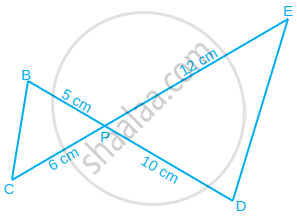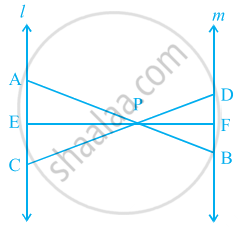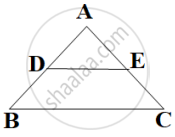Topics
Number Systems
Real Numbers
Algebra
Polynomials
Pair of Linear Equations in Two Variables
- Introduction to linear equations in two variables
- Graphical Method
- Substitution Method
- Elimination Method
- Cross - Multiplication Method
- Equations Reducible to a Pair of Linear Equations in Two Variables
- Consistency of Pair of Linear Equations
- Inconsistency of Pair of Linear Equations
- Algebraic Conditions for Number of Solutions
- Simple Situational Problems
- Pair of Linear Equations in Two Variables
- Relation Between Co-efficient
Quadratic Equations
- Quadratic Equations
- Solutions of Quadratic Equations by Factorization
- Solutions of Quadratic Equations by Completing the Square
- Nature of Roots of a Quadratic Equation
- Relationship Between Discriminant and Nature of Roots
- Situational Problems Based on Quadratic Equations Related to Day to Day Activities to Be Incorporated
- Application of Quadratic Equation
Arithmetic Progressions
Coordinate Geometry
Lines (In Two-dimensions)
Constructions
- Division of a Line Segment
- Construction of Tangents to a Circle
- Constructions Examples and Solutions
Geometry
Triangles
- Similar Figures
- Similarity of Triangles
- Basic Proportionality Theorem (Thales Theorem)
- Criteria for Similarity of Triangles
- Areas of Similar Triangles
- Right-angled Triangles and Pythagoras Property
- Similarity of Triangles
- Application of Pythagoras Theorem in Acute Angle and Obtuse Angle
- Triangles Examples and Solutions
- Concept of Angle Bisector
- Similarity of Triangles
- Ratio of Sides of Triangle
Circles
Trigonometry
Introduction to Trigonometry
- Trigonometry
- Trigonometry
- Trigonometric Ratios
- Trigonometric Ratios and Its Reciprocal
- Trigonometric Ratios of Some Special Angles
- Trigonometric Ratios of Complementary Angles
- Trigonometric Identities
- Proof of Existence
- Relationships Between the Ratios
Trigonometric Identities
Some Applications of Trigonometry
Mensuration
Areas Related to Circles
- Perimeter and Area of a Circle - A Review
- Areas of Sector and Segment of a Circle
- Areas of Combinations of Plane Figures
- Circumference of a Circle
- Area of Circle
Surface Areas and Volumes
- Surface Area of a Combination of Solids
- Volume of a Combination of Solids
- Conversion of Solid from One Shape to Another
- Frustum of a Cone
- Concept of Surface Area, Volume, and Capacity
- Surface Area and Volume of Different Combination of Solid Figures
- Surface Area and Volume of Three Dimensional Figures
Statistics and Probability
Statistics
Probability
Internal Assessment
- AAA test for similarity of triangles
- AA test for similarity of triangles
- SAS test of similarity of triangles
- SSS test for similarity of triangles
Notes
Already in concept 2 we have learned the criteria for similarityof triangles, let's recall it.
Two figures are similar if
1) The corresponding angles are same in measurement i.e ∠A≅∠D, ∠B≅∠E, ∠C≅∠F AND
2) The corresponding sides are of same ratios i.e `"AB"/"DE"="BC"/"EF"= "AC"/"DF"`
In this concept we will learn three new theorems, let's understand them one by one.
Theorem
Theorem1: If in two triangles, corresponding angles are equal, then their corresponding sides are in the same ratio (or proportion) and hence the two triangles are similar.
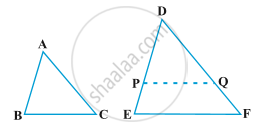
Given: ∠A= ∠D, ∠B= ∠E, ∠C= ∠F
To prove: `"AB"/"DE"="BC"/"EF"= "AC"/"DF"`
Construction: Cut DP=AB, DQ=AC, join PQ
Proof: This criterion is referred to as the AAA (Angle–Angle–Angle) criterion of similarity of two triangles.
In ∆ABC and ∆DPQ
AB= DP (by construction)
AC= DQ (by construction)
∠A= ∠D (Given)
∆ABC ≅ ∆DPQ (Side-Angle-Side rule)
Side-Angle-Side is a rule used to prove whether a given set of triangles are congruent. If two sides and the included angle of one triangle are equal to two sides and included angle of another triangle, then the triangles are congruent. An included angle is an angle formed by two given sides.
So, ∠B= ∠P (Corresponding parts of Congruent triangles)
But, ∠B= ∠E (Given)
Therefore, ∠P= ∠E, ∠P and ∠E are corresponding to each other.
Now, we know that if corresponding are equal then the lines are parallel.
As per this rule, if ∠P= ∠E,
then PQ is parallel to EF
`"DP"/"PE" =" DQ"/"QF"` (by BPT)
We can also say that, `"DP"/"DE"= "DQ"/"DF"` (by corollary of BPT) AB=DP (by construction)
Therefore, `"AB"/"DE"= "AC"/"DF"` ........eq1
Similarly, if draw a line MN and prove it parallel to DF
Then `"BC"/"EF"= "AB"/"DE"` ..........eq2
And also `"AC"/"DF"= "BC"/"EF"` ..........eq3
From eq1, eq2 and eq3
`"AB"/"DE" = "BC"/"EF" = "AC"/"DF"`
hence, the two triangles are similar.
Theorem2: If in two triangles, sides of one triangle are proportional to (i.e., in the same ratio of) the sides of the other triangle, then their corresponding angles are equal and hence the two triangles are similiar.
This criterion is referred to as the SSS (Side–Side–Side) similarity criterion for two triangles.
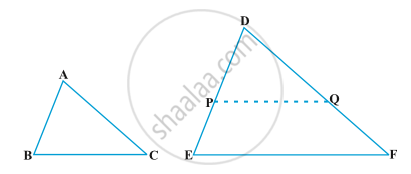
Given: `"AB"/"DE"= "BC"/"EF"= "AC"/"DF"`
To prove: ∠A= ∠D, ∠B= ∠E, ∠C= ∠F
Construction: Cut DP=AB and DQ=AC, join PQ
Proof: `"AB"/"DE"= "AC"/"DF"` (Given)
`"DP"/"DE"= "DQ"/"DF"` (by construction)
PQ || EF (converse of BPT)
∠P= ∠E (corresponding angles)
∠Q= ∠F (corresponding angles)
Now two corresponding angles of two triangles are equal, ∆DPQ ∼ ∆DEF by AA Similarity test.
Therefore, `"DP"/"DE" = "PQ"/"EF"` (Corresponding parts of Congruent triangles)
`"AB"/"DE"= "PQ"/"EF"` [Since, AB=DP]
`"BC"/"EF"= "PQ"/"EF"` `("AB"/"DE"= "BC"/"EF" "is" "given")`
`"BC" = "PQ"`
In ∆ABC and ∆DPQ,
DP=AB (by construction)
DQ=AC (by construction)
BC= PQ (proved above)
Therefore, ∆ABC ≅ ∆DPQ (Side-Side-Side rule)
∠A= ∠D (Corresponding parts of Congruent triangles)
∠B= ∠P (Corresponding parts of Congruent triangles)
∠C= ∠Q (Corresponding parts of Congruent triangles)
But ∠P= ∠E
Therefore, ∠B= ∠E
And ∠Q= ∠F
Therefore, ∠C= ∠E
Hence, the two triangles are similar.
Theorem3: If one angle of a triangle is equal to one angle of the other triangle and the sides including these angles are proportional, then the two triangles are similar.
This criterion is referred to as the SAS (Side–Angle–Side) similarity criterion for two triangles.
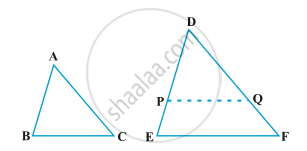
Given: ∠A= ∠D, `"AB"/"DE" ="AC"/"DF"`
To prove: ∆ABC ∼ ∆DEF
Construction: Let us take the ∆ABC and ∆DEF such that
`"AB"/"DE" = "AC"/"DF" = <1`
Cut DP=AB and DQ=AC, join PQ.
Proof: In ∆ABC and ∆DPQ,
AB= DP (by construction)
∠A= ∠D (given)
AC= DQ (by construction)
Therefore, ∆ABC ≅ ∆DPQ (Side-Angle-Side rule)
∠B= ∠P (Corresponding parts of Congruent triangles)
∠C= ∠Q (Corresponding parts of Congruent triangles)
`"AB"/"DE" = "AC"/"DF"` (Given)
`"DP"/"DE" = "DQ"/"DF"` [Since, DP=AB and DQ=AC]
PQ || EF (by converse of BPT)
∠P= ∠E and ∠Q= ∠F (corresponding angles)
∠P= ∠B and ∠Q= ∠C (proved above)
Therefore, ∠B= ∠E and ∠C= ∠F
Therefore, the two triangles are equiangular.
So, ∆ABC ∼ ∆DEF
Hence proved.

